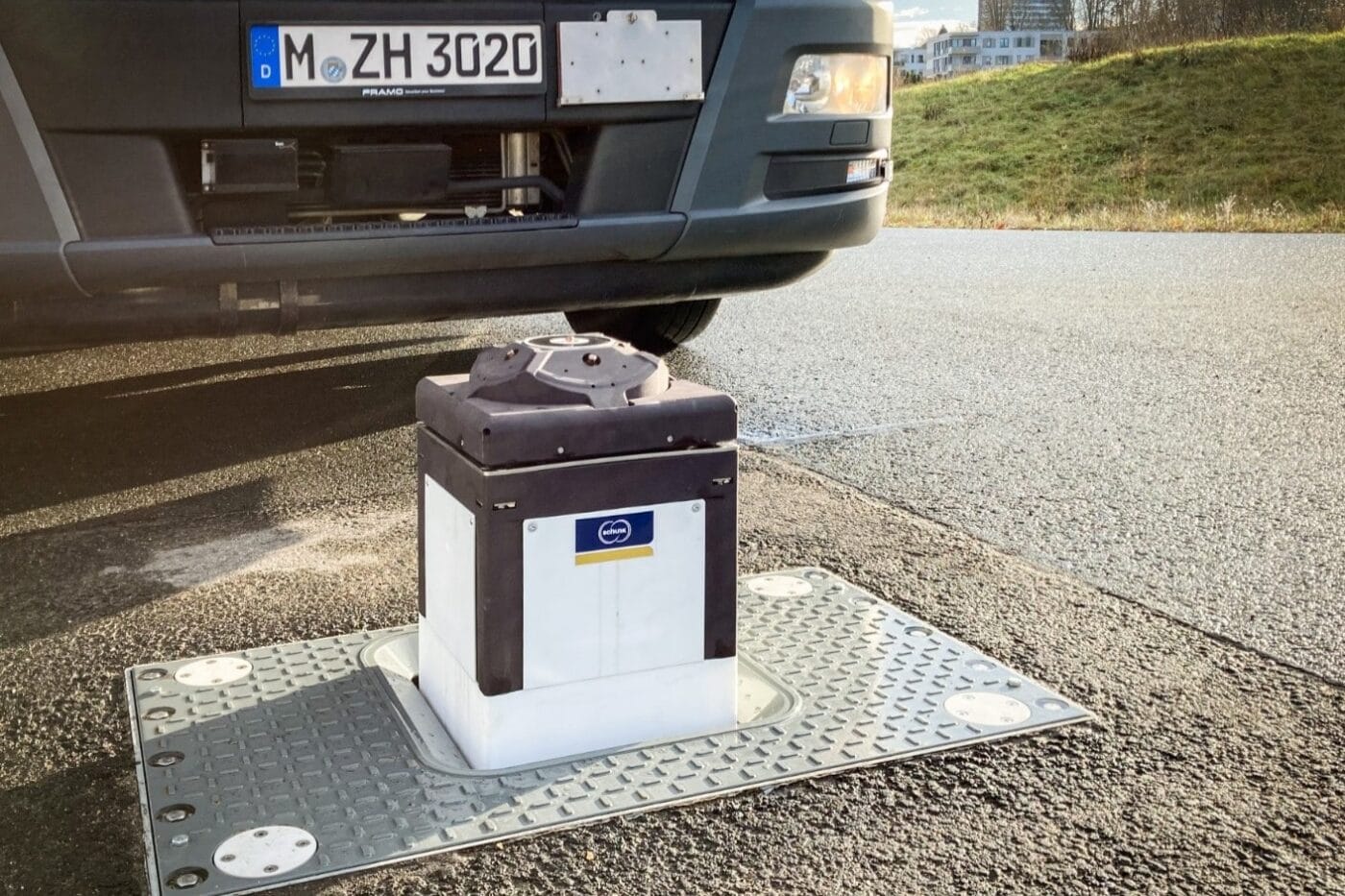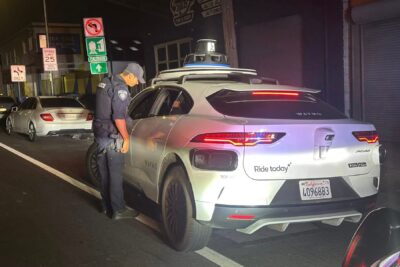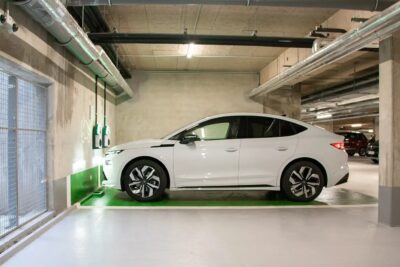Fraunhofer IVI develops underfloor charging system for trucks
The Fraunhofer Institute for Transportation and Infrastructure Systems (IVI) has been researching an underfloor charging system for several years. The concept allows the entire charging process to start and stop at the push of a button without handling cables. At the core of the system is an automated contact mechanism connecting the underside of the truck with a retractable ground element. Importantly, a physical connection forms between the ground transmitter and the vehicle receiver, meaning it is not an inductive charging system.
Much of the development took place as part of the German research project MEGA-LADEN (2020–2024), which included the installation of a charging solution in Berlin, Germany. Charging outputs of up to 300 kW were achieved, and a second site has since been established in Dresden.
The research team highlights that the underfloor system saves space, as no separate charging station is needed beside parking spaces. Cable handling is eliminated, and the street-side unit is robust, weatherproof, and drivable. “The system has no above-ground power lines and offers no points of attack for cable theft and vandalism,” the team notes.
The system can be anchored to the ground in different ways—as a roadway-integrated solution or as a flexible surface-mounted system—and is fully scalable. It supports voltages up to 1,250 V and charging outputs up to 4.5 MW for commercial vehicles. The high outputs are why the Dresden team opted for a conductive rather than inductive system: “If high power levels are to be transmitted, only conductive, i.e., contact-based systems (charging cable with plug) are currently an option.” A fully automatic replenishment system was developed to overcome the limits of conventional plug-and-cable units for outputs up to 4.5 MW.
The 4.5 MW output (or 1.2 MW for passenger cars) is only achievable with the buried system, as demonstrated on test benches in the MEGA-LADEN project. The surface-mounted system provides up to 300 kW, aimed primarily at cars and light commercial vehicles. Charging starts at 50 kW, and the system uses the same interface regardless of output, unlike CCS and MCS plug systems.
Vehicles require a compatible receiver that measures 63.5 × 28.5 × 6 cm and weighs 4.6 kg. The contact surface is shaped like an inverted truncated pyramid, matching the ground unit. When not charging, the receiver is protected by a flap. Camera-based guidance helps the ground unit and receiver align, with a “parking tolerance,” allowing slight movement. An electromagnet ensures reliable contact, and communication between charger and vehicle is handled automatically via “OppCharge.”
In Dresden, the system has been tested for several months using a 15-ton truck retrofitted with the receiver. The system is also designed for autonomous operation, allowing vehicles to initiate and complete charging without human intervention—a feature suitable for automated depots: “In a future where vehicles operate autonomously, it will be crucial that the charging process takes place without human intervention. The system developed could enable vehicles to initiate and carry out the charging process independently. This concept is also conceivable for automated depots, where vehicles dock independently at charging stations and take over the charging process.”
The data collected during testing in Dresden are now intended not only to optimise the charging system but also to provide valuable insights into the usability and availability of the technology. Additionally, the two partners hope to collaborate with a vehicle manufacturer to build a small series of vehicles, sustainably electrifying the fleet and further expanding the benefits of e-mobility in Dresden.
“The trial will continue until the end of this year, and possibly beyond,” Fraunhofer IVI told electrive. “The drivers are very satisfied. Charging takes place once a day, five days a week.” And: “The city cleaning department is so impressed with the charging solution that it plans to install another underfloor charging system on its premises next year.”
Potential applications include agriculture, industry, construction, parking lots, and charging stations or parks. Before commercial rollout, the system must be standardised. Earlier this year, the first draft of IEC 61851-26 (“defines requirements for electric vehicle (EV) supply equipment with automated docking capabilities”) was completed. Fraunhofer IVI also contributed to a standardisation mandate for the ACD-U interface to establish an international standard for underfloor charging.
Commercialisation will likely be carried out by interested suppliers or charging system manufacturers rather than Fraunhofer itself. The system’s readiness is already high, reaching Level 7 of 9 on the Technology Readiness Scale.
ivi.fraunhofer.de, mega-laden.de
This article was first published by Cora Werwitzke for electrive’s German edititon.





0 Comments